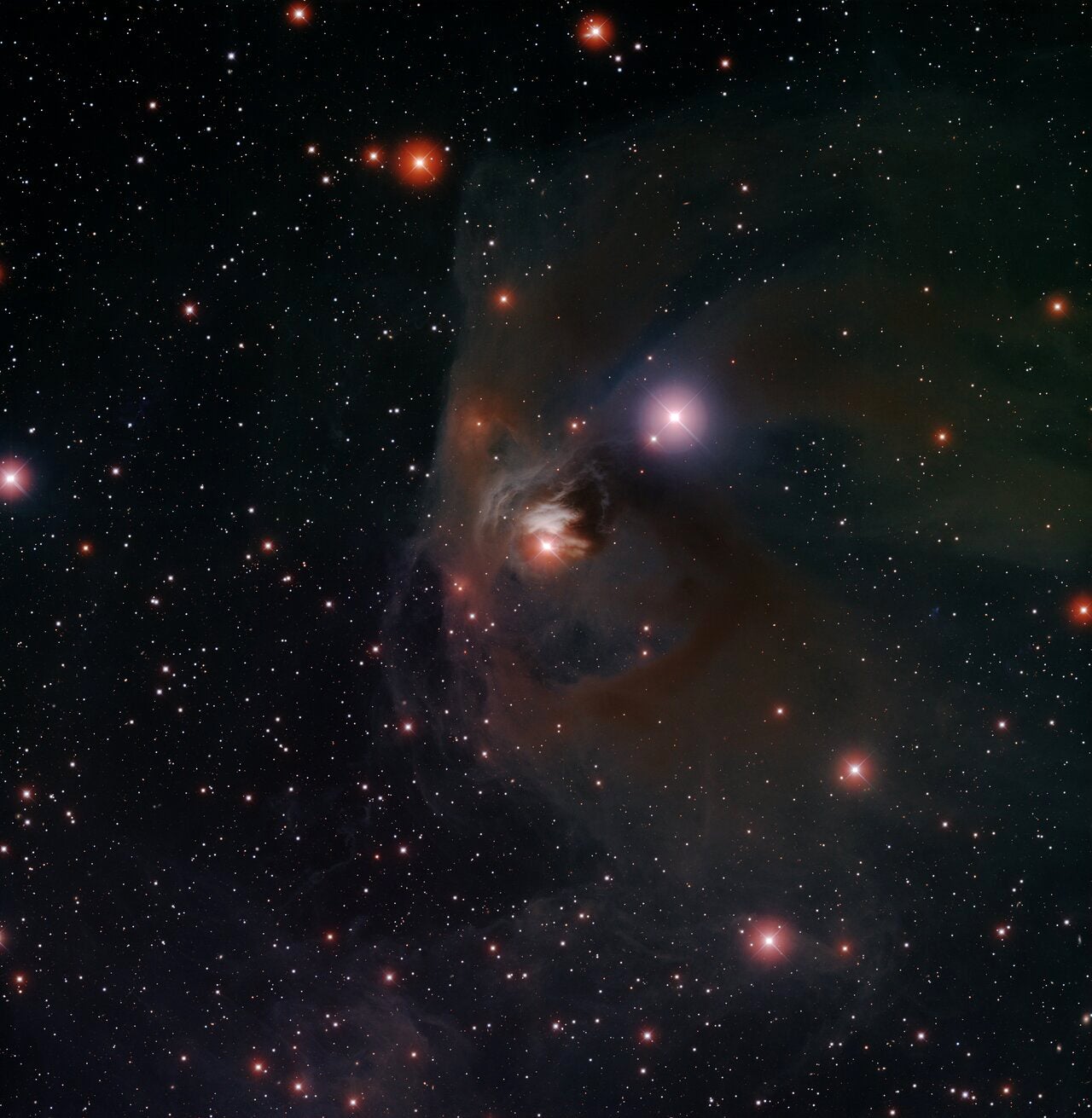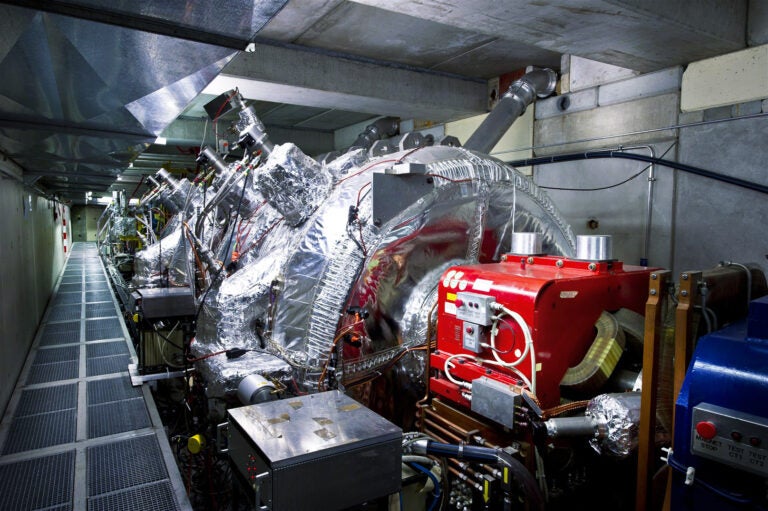
T Tauri is the prototype of an irregular class of variable stars found only in nebulae and young clusters. English astronomer John Russell Hind discovered T Tauri and its associated nebulosity (NGC 1555; 1′ west) on Oct. 11, 1852, while searching for minor planets with a 7-inch refractor. The next day, he announced his findings in the Astronomische Nachrichten: “Last night I noticed a very small nebulous-looking object in [Taurus, just north of the Hyades near Epsilon]: it was south-preceding a star of 10th mag, which, to my surprise, has escaped insertion on the map for 4h R.A. recently published — possibly [the star] may be variable.”
Curiously, while the variations of T Tauri appear to be linked to changes in the brightness of the nebula, their erratic behaviors are not in sync. Of T Tauri’s fluctuations, Mount Wilson Observatory astronomer Alfred Joy wrote in 1945, “The variations in light of the T Tauri stars are so irregular and unpredictable that classification by means of their light curves is practically impossible.”
T Tauri sporadically jumped from magnitude 9.3 to 14 between 1864 and 1916. Over the last half-century, data from the American Association of Variable Star Observers show that while T Tauri’s brightness varies by a few tenths of a magnitude every day, its general long-term trend shows it randomly fluctuating between magnitude 9.3 and 12.
T Tauri is a newly formed star less than 10 million years old, with a mass less than three Suns. Its behavior may be due to activity in the star’s atmosphere, or perhaps remaining dust and gas from the nebula in which it was conceived, which can temporarily obscure light streaming from the star. So be prepared for anything when you look.









